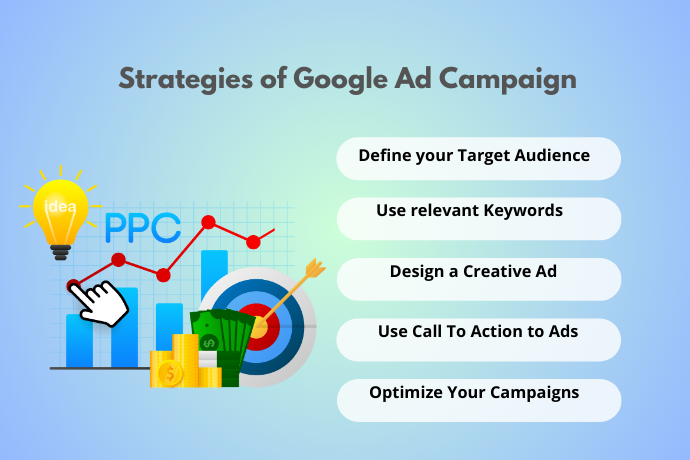
Google Ads for Doctors: Know the Performance Benchmarks
Google Ads makes it easier for you to connect with the right patients by promoting your medical services on Google. You can target your ads based on factors like age, gender, location, interests, and search terms, ensuring your practice reaches people actively looking for healthcare solutions.
Let’s review Google Ad’s benefits, strategies, and performance benchmarks for the Google Ads for the Healthcare Industry.
By using Google Ads, healthcare professionals can reach potential consumers who are actively looking for healthcare services on the Internet. Imagine being able to communicate with clients online at the correct time while seated in your clinic.
What to Expect in Google Ads for Doctors?
Google created Google Ads, formerly known as Google AdWords, as a platform for Internet advertising. Businesses can design ads to target potential customers at the right time when they are interested in their goods and services.
A significant Google AdWords measure that affects the efficiency and effectiveness of your advertising is the Quality Score. Your PPC campaigns and the keywords your medical practice targets are evaluated according to a quality score.
It determines the CPC, which is the Cost per click, the amount you pay for each click on your advertisement.
Strategies for a Successful Google Ad Campaign
By placing you at the top of a Google search using specific keywords and search terms associated with your treatments and procedures, Google advertisements for doctors enable medical practices to accomplish their goals.
Define your target audience: It’s important to identify your target audience before you start designing your advertisements. It involves learning about their demographics, their medical supplies, and the healthcare treatments they seek.
Use Relevant Keywords: Incorporate high-volume keywords into your ads to ensure they reach the right audience. Tools like Google Keyword Planner can help identify the keywords most applicable to your practice and location, maximizing your ad visibility.
Design a creative Ad: To capture users’ attention, make your ads interesting and educational. Explain clearly and briefly, and include the necessary information about your services and practice.
Use a Call to Action to Boost Ads: You should make it clear to audiences what you want them to do in your advertising with a compelling call to action. This can include scheduling a meeting, obtaining informational materials, or maintaining your social media presence.
Observe and Optimize your campaigns: Consistently track them to ensure they produce the desired results. The Google AdWords dashboard allows you to monitor the effectiveness of your ads.

How Does Google Ads Work?
- Develop Campaigns: Customize campaigns to target audiences and specific goals.
- Set Budget and Bidding Strategy: Use resources effectively to get the most out of your advertisements.
- Conduct Keyword Research and Selection: Determine which keywords increase traffic and lead to conversions.
- Create Engaging Ads: Attract viewers with eye-catching pictures and content.
- Define Target Audience: Gain insight into behaviors and demographics to improve targeting.
- Choose Ad Placements: Choose media outlets that suit your target market.
- Track Performance and Optimize: Examine data to enhance marketing performance in the future.
Google Ads Performance Benchmarks:
Click-through Rate (CTR):
Your ad’s click-through rate (CTR) indicates how frequently people click it. In terms of average click-through rate (CTR) on Google Search Ads, the health and medical sector is in the lead.
As per Wordstream’s Google Ads benchmarks study, the typical PPC campaign for a medical practice yields a click-through rate of approximately 3.27% or 3.27 out of every 100 individuals.
When assessing the performance of your Google Ads, CTR is an important metric to monitor.
This metric is calculated by dividing the total clicks by the total impressions that the campaign generated.
Google incorporates CTR into its bidding mechanism, which calculates CPC, along with multiple other measures. Because of this, it’s critical to keep your CTR high.
Cost Per Click (CPC):
The amount you have to pay each time a user clicks on one of your ads is known as the Cost per click, or CPC. The Cost per click (CPC) for your website could differ based on quality score, competition, and your bidding amount.
Your business will only be charged when a customer clicks on the ad because Google Ads uses a pay-per-click (PPC) system for business.
Google will show ads if it thinks they are related to the user’s query. Depending on the services provided and the degree of competition in your area, the average CPC in the Indian healthcare industry normally ranges from ₹80 to ₹500.
Conversion Rate:
The Percentage of users that convert into consumers by finishing the procedure after clicking on an advertisement is known as the conversion rate. This is an important measure to consider when assessing the success of your Google Ads campaigns.
The average conversion rate for the healthcare industry is 3.36%. Your conversion rate is the third important indicator of the effectiveness of Google Ads. Based on all the clicks that the campaign generated, this Percentage shows the number of conversions made.
Lead Conversion Rate (LCP):
In simple terms, LCR measures the number of people who become patients after clicking on your Google search ads.
4.63% is the standard of an average all-industry LCR. For medical practices, LCR is 3.36%.
LCR includes the total number of individuals who clicked through the advertisement and converted right to a call, those who clicked through from the landing page to the ads, and those who came to your website after seeing the advertisement.
For instance, the average dentist’s lead conversion rate is approximately 36%, which is the conversion of organic leads.
How is the impression-to-conversion Percentage different from the conversion rate?
The impression-to-conversion Percentage is the Percentage of impressions that resulted in conversions. Based on the number of times your ad was shown to users, this Percentage shows how well it converts.
Impression-to-Conversion Percentage=(Conversions/Impressions)×100
On the other hand, the conversion rate is the Percentage of users that convert into consumers by finishing the procedure after clicking on an ad. It provides insights into how well the ads perform.
Conversion Rate=(Conversions/Clicks)×100
Simply put, the impression-to-conversion Percentage indicates efficiency based on ad visibility, whereas the conversion rate shows user engagement after clicking.
Wrapping Up:
Healthcare Advertising can boost your online presence and patient engagement, thereby helping to convert leads into potential clients. Increase your website traffic with personal healthcare advertising strategies. Join us today, the best healthcare advertising agency, to grow your business digitally.
Search
Recent Post
Categories
- AI in Healthcare
- Content Marketing
- Dental
- dental Digital Marketing
- Google Ads
- Google my business
- Healthcare marketing
- Healthcare SEO
- Internet Marketing Tips
- Lead Generation
- Local SEO
- Patient Satisfaction
- pay per click
- Pharma Marketing
- Social
- Social Media Marketing
- Traffic
- Website
- Website Designing
Contact
Get in Touch With Us
Coimbatore Address
- 21/1, Periasubbanna Gounder Street, K.K.Pudur, Coimbatore, Tamil Nadu 641038.
- 098942 76263
- info@harveehealthcare.com

Chennai Address
- RMZ Millenia Business Park, Level 6, Phase II, Campus 4B Unit 602A, Kandancavadi, Perungudi, Chennai, Tamil Nadu 600096.
- 098942 76263
- info@harveehealthcare.com

Dubai Address
- Umm Sequeim 3, Jumeirah Rd Opposite Burj Al Arab, Villa #1 855 A Dubai.
- info@harveehealthcare.com

United Kingdom Address
- 3/2 Powderhall Rigg Edinburgh, United Kingdom EH7 4GA.
- info@harveehealthcare.com

Copyrights © 2025 harvee.co.uk











Leave a Reply